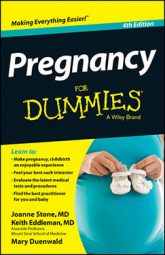Your baby grows rapidly during the second trimester, as you can see. The fetus measures about 3 inches (8 centimeters) long at 13 weeks. By 26 weeks, it’s about 14 inches (35 centimeters) and weighs about 2-1/4 pounds (1,022 grams).
Somewhere between weeks 14 and 16, the limbs begin to elongate and start to look like arms and legs. Coordinated arm and leg movements are observable on ultrasound, too. Between 18 and 22 weeks, you may begin to feel fetal movements, although they don’t necessarily occur regularly throughout the day.
![[Credit: Kathryn Born, MA]](https://www.dummies.com/wp-content/uploads/438124.image0.jpg)
The baby’s head, which was large in relation to the body during the first trimester, becomes more proportional as the body catches up. The bones solidify and are recognizable on ultrasound. Early in the second trimester, the fetus looks something like an alien (think E.T.), but by 26 weeks, it looks much more like a human baby.
The fetus also performs many recognizable activities. It not only moves, but also undergoes regular periods of sleeping and wakefulness and can hear and swallow. Lung development increases markedly between 20 and 25 weeks. By 24 weeks, lung cells begin to secrete surfactant, a chemical substance that enables the lungs to stay expanded.
Between 26 and 28 weeks, the eyes — which had been fused shut — open, and hair (called lanugo) appears on the head and body. Fat deposits form under the skin, and the central nervous system matures dramatically.
At 23 to 24 weeks, the fetus is considered viable, which means that if it were born at this time, it would have a chance of surviving in a center with a neonatal unit experienced in caring for very premature babies. A premature baby born at 28 weeks (nearly three months early) and cared for in an intensive care unit has an excellent chance of survival.
Most mothers begin to feel their babies move at about this time. Knowing for sure when you first feel your baby moving inside you is difficult. Many women sense fluttering movements (called quickening) at about 16 to 20 weeks.
Not every woman can tell that sensation is actually the baby moving. Some think it’s just gas (and maybe you did eat too much chili) — but most likely, it’s the baby. Around 20 to 22 weeks, the fetal movements are much easier to identify, but they still aren’t consistent. Over the course of the next four weeks, they fall into a more regular pattern.
Different babies have different movement patterns. You may notice your baby tends to move more at night — perhaps to prepare you for all the sleepless nights you’ll have after he is born! Or you may simply be more aware of the baby’s movements at night because you’re more sedentary at that time. If this is your second (or third or fourth . . . ) child, you may start to feel movements a couple of weeks earlier.
If you haven’t felt your baby move at all by 22 weeks, let your practitioner know. He may recommend an ultrasound, especially if you haven’t had one already, to check the baby. A common explanation for not feeling the baby’s movements is that the placenta is implanted on the anterior (front) wall of the uterus between the baby and your skin. The placenta acts as a cushion and delays the time when you first feel movements.
After 26 to 28 weeks, if you stop feeling the baby move as much as usual, call your practitioner. By 28 weeks, you should feel movement at least six times an hour after you eat dinner. If you aren’t sure whether the baby is moving normally, lie down on your left side and count the movements.
If the baby moves — any movement counts — at least six times in an hour, be reassured that the baby is okay. On the other hand, if you feel that the baby’s movements are still less than they should be, call your practitioner.

